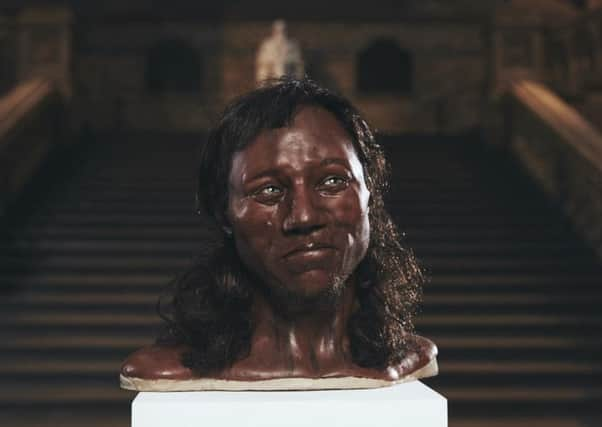First modern Briton had '˜dark to black' skin


Britain’s oldest complete skeleton, known as Cheddar Man, was unearthed more than a century ago in Gough’s Cave in Somerset.
But an unprecedented examination of his DNA, along with a facial reconstruction of the fossil, shows the young man would have had a darker complexion than previously thought, along with blue eyes and dark, curly hair.
Advertisement
Hide AdPrevious reconstructions of Cheddar Man, which were not based on DNA data, depicted him with a lighter skin tone.
Yet research by evolution and DNA specialists at the Natural History Museum and University College London (UCL) suggests the pigmentation associated with northern European ancestry is a more recent development.
The research and remodelling process was documented for Channel 4 show The First Brit: Secrets of the 10,000 Year Old Man. Professor Ian Barnes, research leader at the Natural History Museum, said: “For me, it’s not just the skin colour that’s interesting. It’s that combination of features that make him look not like anyone that you’d see today.
“Not just dark skin and blue eyes, because you can get that combination, but also the face shape. So all of this combines together and make him just not the same as people you see around today.”
Researchers Professor Barnes and Dr Selina Brace extracted DNA data from bone powder by drilling a 2mm hole through the skull’s inner ear bone. They scanned the skull and a 3D model was produced by “paleo artists” Alfons and Adrie Kennis, who make life-like reconstructions of extinct mammals and early humans. The twins, who have created reconstructions for museums around the world and usually create models of Neanderthals, spent three months creating Cheddar Man.
“It’s really nice to make a more graceful man, not a heavy-browed Neanderthal,” Alfons said. “So we were very excited that it was a guy from after the Ice Age. We were very interested in what kind of human he was.
Advertisement
Hide Ad“With the new DNA information, it was really revolutionary.”
Cheddar Man, thought to have died in his 20s and have had a relatively good diet, lived in Britain when it was almost completely depopulated.
Although previous populations had settled in Britain long before his arrival, they were wiped out before him and he marked the start of continuous habitation on the island.